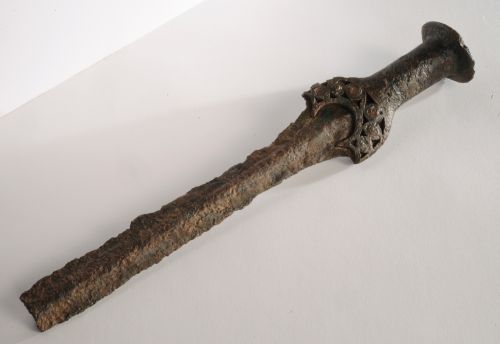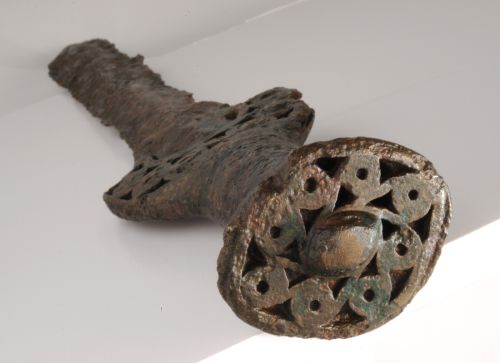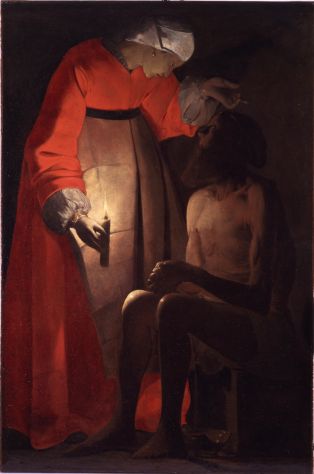- Découvrez les collections
- Notice d'oeuvre





Aller plus loin :
L. 30 cm ; l. 5,5 cm ; Pds. 352
M0536_2014.0.105
L’âge du Bronze se distingue par un nouveau mode de gestion des ressources et le développement d’une nouvelle technologie : la métallurgie du bronze, un métal obtenu par alliage du cuivre et de l’étain. Il permet la création de parures, la fabrication de nouveaux instruments agraires et de nouvelles armes, comme l’épée ou le bouclier. L’épée de Sion a été découverte, au XIXe siècle, près de la vallée de la Moselle, au niveau d’une de ces très anciennes voies d’échange qui relie la Méditerranée exportatrice de cuivre et le nord de l’Europe producteur d’ambre de la Baltique. Son contexte archéologique nous est inconnu mais d’après sa typologie, elle est datée de la période du Bronze moyen, entre 1500 et 1300 avant notre ère. La Lorraine est alors située dans l’ère d’influence de la civilisation des tombes sous tumulus (éminence artificielle). Cette épée est constituée d’une lame à nervure centrale et d’une poignée en bronze à décor ajouré dotée de six rivets portant un décor solaire spiralé. La garde est très échancrée en forme de croissant de lune. Il s’agit d’une pièce importée provenant du nord de l’Europe, probablement de Scandinavie, une aire culturelle très dynamique qui a produit de nombreux objets en bronze très originaux.
The Bronze Age featured a new way of managing resources and the development of a new technology: bronze metallurgy, a metal obtained from an alloy of copper and tin. It led to the creation of jewellery and the development of new farming tools and new weapons, like the sword and the shield. The Sion sword was found in the nineteenth century near the Moselle Valley, on one of the ancient trade routes linking the Mediterranean (a major exporter of copper) and Northern Europe (producer of Baltic amber). The sword’s archaeological context is unknown, but its typology suggests it dates back to the Middle Bronze Age, between 1500 and 1300 BCE. The Lorraine in fact feature structures that place it in the megalithic era of influence. This sword is made up of a blade with a central fuller and a bronze handle with a perforated design of six rivets that form the rays of a spiralling sun. The hilt is curved into a crescent moon, and was imported from northern Europe, probably from Scandinavia, where many highly original bronze objects were produced.



 Copyright© WebMuseo 2017 - 2024
Copyright© WebMuseo 2017 - 2024